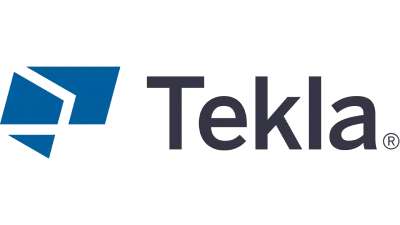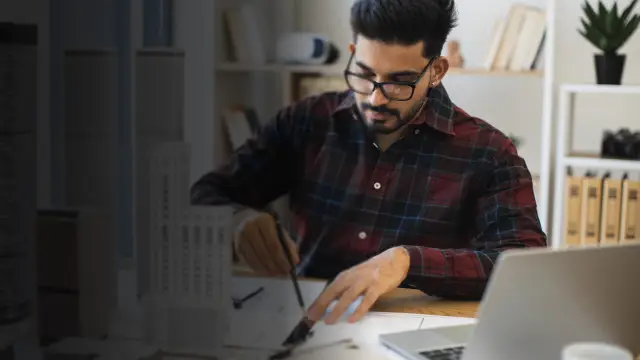Learn Structural Design Course for a High Paying Career
From Blueprints to Brilliance! Master Structural Design Principles with Expert Guidance and Hands-on Experience with NSDC certified Entri Elevate Structural Design Online Course. Enroll Now!
Online
12 months

Structural Design Course Overview
The Structural Design Course by Entri Elevate is tailored for civil engineers seeking to advance their careers and secure high-paying office jobs in India and abroad. It equips students with the necessary skills and knowledge to thrive in this dynamic field. The program offers comprehensive training and hands-on experience, preparing students for success in structural engineering.

Expert Guidance

Live workshops by leaders
Assignments

Software skills (ETABS, STAAD pro, AutoCAD)
Live Projects from Middle East
12 months Mentorship
Placement assistance

CV preparation sessions

Recorded classes
Live doubt clearing sessions
Industry Interactions
Course completion certificate
Skills Covered
Studying structural engineering through an online course can equip you with a range of valuable skills, including:
Software Tools Covered
Check out the software tools covered to equip you to be a Structural Engineer:
Job Roles
Upon finishing a structural design course, individuals possess the essential skills and knowledge to explore diverse career opportunities within the field. Here are several paths they may consider:
Enhance the chance to join private consultants
The program offers technical exposure equivalent to 2-3 years of professional experience, enhancing interview performance and making candidates highly desirable to employers.
In-House Structural Engineer for Builders
Work closely with architects and construction teams to ensure structural integrity in medium-storied structures, offering valuable contributions to prestigious projects.
Job Opportunities in Gulf
Equipped with international design standards understanding, candidates are poised for roles in Gulf countries, offering expertise sought after by private consultants and construction firms.
Design Perspective for Gulf Countries
Understanding American codes enhances confidence in Gulf projects, appealing to private consultants seeking international standards familiarity.
Jr. Design Engineer
Junior Design Engineers begin their careers by aiding senior engineers in designing and analyzing structural systems. They assist with drafting, calculations, and assessments.
Sr. Design Engineer
Senior Design Engineers are seasoned professionals in structural engineering, leading design processes, managing projects, overseeing junior engineers, and ensuring designs meet safety and regulatory standards.
Team Leader
A structural engineering Team Leader manages a team of engineers and technicians on diverse projects. They coordinate schedules, allocate resources, monitor progress, and ensure client expectations are met.
Quality Control Engineer
Quality Control Engineers are vital for maintaining the quality and integrity of structural designs and construction processes. They establish procedures, conduct inspections, and perform tests to detect issues.
Associate Director
Associate Directors in structural engineering hold managerial positions in engineering firms or construction companies. They manage multiple projects, cultivate client relationships, and support business development efforts.
Technical Director
Technical Directors are high-ranking executives offering technical leadership within organizations. They supervise project technicalities, provide solutions for complex engineering challenges, and foster innovation in design and construction methods.
Structural Design Course Curriculum
Dive into the world of Structural Design with our comprehensive course syllabus.
- Who Is a Structural Engineer
- License
- Qualification
- Types of Framing, Framed, Flat slab, SW
- STANDARDS IS, BS, ACI
- Softwares reqd. (ETABS, STAAD, AutoCAD, SAFE, Tekla, SAP, GAAS etc)
- SD
- load flow chart
- work flow chart
- ETABS very basics
- STAAD basics
- Modeling of a very basic structure with 6 columns
- General Design Requirements -Stability, Stiffness, Strength, Deformability and Ductility (Codal provisions)
- Load Calculation for Gravity Loads (IS, BS & ACI)
- Load Calculation for Lateral Loads (IS, BS & ACI)
- Wind and seismic loading explain
- Stiffness modifiers
- Load combination
- Beam definition- local axis definition
- Column-local axis definition
- Slab- membrane, shell thin - local axis definition
- Walls-local axis definition
- Support condition, Pinned/fixed
- Grid assignment
- Loading assignment
- section assignment
- Wind loading
- Seismic loading, Mass source etc
- Load combinations
- Strength, Stability
- Bending moment
- SF
- Deflection, Drift
- Torsion (Equilibrium)
- Serviceability
- Mode shape
- Story Stiffness
- Design of RCC Beams
- Design of RCC slabs
- Design of RCC columns
- Design of RCC shear wall
- Design of RCC staircase
- Design of RCC Foundation
- Interpretation of Geotechnical Report and Understanding of important Geotechnical parameters
- Isolated, combined footing
- Pile ( Underreamed, DMC Pile)
- Section sizes
- rebar sizes
- rebar spacing, etc
- Historical Development And Characteristics Of Structural Steels
- Introduction To Limit States
- Design Of Tension Members
- Introduction To Column Buckling
- Introduction To Plate Buckling
- Local Buckling And Section Classification
- Laterally Restrained Beams
- Design Of Axially Loaded Columns
- Unrestrained Beam Design
- Design Of Beam-columns junction
- Design Plate Girders
- Beams Subjected To Torsion And Bending
- Composite Beams I
- Composite Floors - I
- Steel-concrete Composite Columns
- Trusses
- Welds Static And Fatigue Strength
- Bolted Connections
- Plastic Analysis
- Portal Frames
- Earthquake Resistant Design Of Steel Structures
- International Standard code
- British Standard code
- American Concrete Institute code
Blogs
Wondering which civil engineering path will skyrocket your career? We’ve got the inside scoop from our recent polls at Entri!
A structural design engineer develops the drawings, details, and schematics that are needed for the construction of larger structures such as bridges, buildings, and other public utility structures.
A structural design engineer is an engineering specialist whose role revolves around designing and assessing structures, ensuring their robustness and stability.
Structural engineering is a highly specialized field of civil engineering. It can be described as a set of methods or tools that are used to determine the safe and economical specifications of a structure.
The different role of an architect and a structural engineer in the construction industry frequently spark interest. Their cooperation will serve as the project’s cornerstone, even though the majority of their duties may seem to be different.
Eligibility for Structural Design Course
Individuals with a background in civil engineering are eligible to enroll in the quantity surveying course.

Civil Background
Candidates are required to have a bachelor's degree in civil engineering or a related field

Introduction to Engineering
Familiarity with basic engineering concepts and terminology provides context for structural design principles.

Computer Literacy
Basic computer skills, including familiarity with word processing, spreadsheets, and internet browsing, are necessary for accessing course materials and resources.
Why Live Sessions?
Hosting live sessions for a structural design course offers several benefits:
Interactive Learning Experience
Live sessions allow students to engage directly with the instructor, asking questions and receiving immediate feedback. It enhances comprehension and retention of complex concepts.
Real-time Problem Solving
Students can present problems they're facing in real-time, and the instructor can demonstrate solutions on the spot.
Demonstration of Practical Applications
Live sessions provide opportunities for instructors to demonstrate how theoretical concepts apply to real-world scenarios.
Peer Learning
Students can interact with their peers during live sessions, discussing concepts, sharing insights, and collaborating on problem-solving.
Flexibility and Adaptability
Live sessions can be tailored to address specific topics or challenges that students are encountering. Instructors can adjust the content and pace of the session based on student feedback and needs.
Accountability
Knowing that they'll be participating in a live session can motivate students to stay on track with their studies and be prepared to engage actively during the session.

Experts to Guide You
Get guidance from qualified professionals and industry experts with 10+ years of experience in the field.
Structural Design - Sample Certificate
Courses Recognised by

Structural Design Course Reviews
Enrolled by StudentsKey Learning Outcomes
Key learning outcomes after completing a structural design course include:
Collaboration with Clients and Architects
Structural engineers work closely with clients and architects to design stable and safe buildings, ensuring that structural requirements align with architectural visions.
Preparation of Construction Drawings
Structural engineers provide the initial set of drawings essential for commencing construction activities on-site, detailing the structural components and specifications.
Problem Identification and Prevention
Structural engineers can identify potential issues in designs before they escalate into costly problems, thereby enhancing project efficiency and minimizing risks.
Expert Testimony and Dispute Resolution
In the event of structural failures or disputes, structural engineers can offer expert testimony and analysis, aiding in dispute resolution processes and ensuring accountability.
Compliance and Standards
Structural engineers play a crucial role in ensuring that construction projects adhere to building codes, regulations, and industry standards, thereby promoting safety and compliance.
_6152.webp)
FAQs of Structural Design Course
Other Upskilling Courses
Entri News
Advantages of Learning from Entri
Interactive Learning
Entri may offer interactive features such as quizzes, practice exams, and simulations, which can enhance your learning experience. These features help reinforce concepts and allow you to gauge your understanding in real time.
Personalized Learning
Entri uses algorithms to personalize the learning experience based on your progress and performance. It can help you focus on areas where you need improvement, making your study time more efficient and effective.
Access to Experts
Entri may provide access to experienced instructors or experts in the field through live sessions, forums, or chat support, allowing you to ask questions, seek clarification, and engage in discussions, enhancing your understanding of complex topics.
Progress Tracking
Many apps offer progress-tracking features that allow you to monitor your advancement through the course material to help you stay motivated and accountable for your learning goals.
Convenience
You can access learning materials anytime, anywhere, as long as you have an internet connection.
Variety of Content
Entri may offer a wide range of content, including video lectures, reading materials, and practice problems, catering to different learning styles and preferences.
Updates and Revisions
Content on apps like Entri can be regularly updated to reflect changes in the field or incorporate user feedback to ensure that you're learning the most current and relevant information.
Explore Free Courses
Who Can Apply for Structural Design Course
- Students
- Freshers
- Professionals
- Job Seekers
- Part Time Workers
- Freelancers



_6527.webp)























